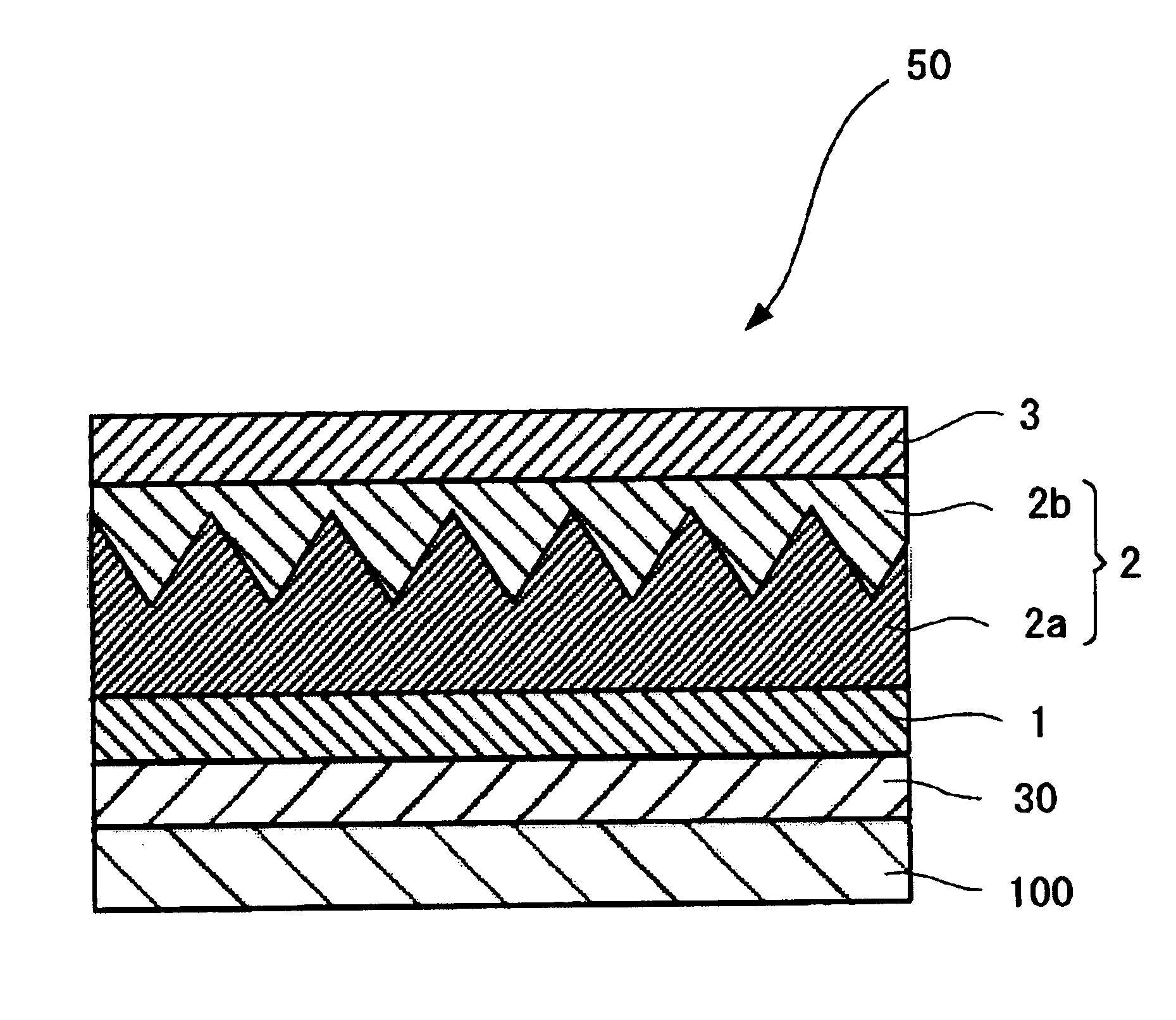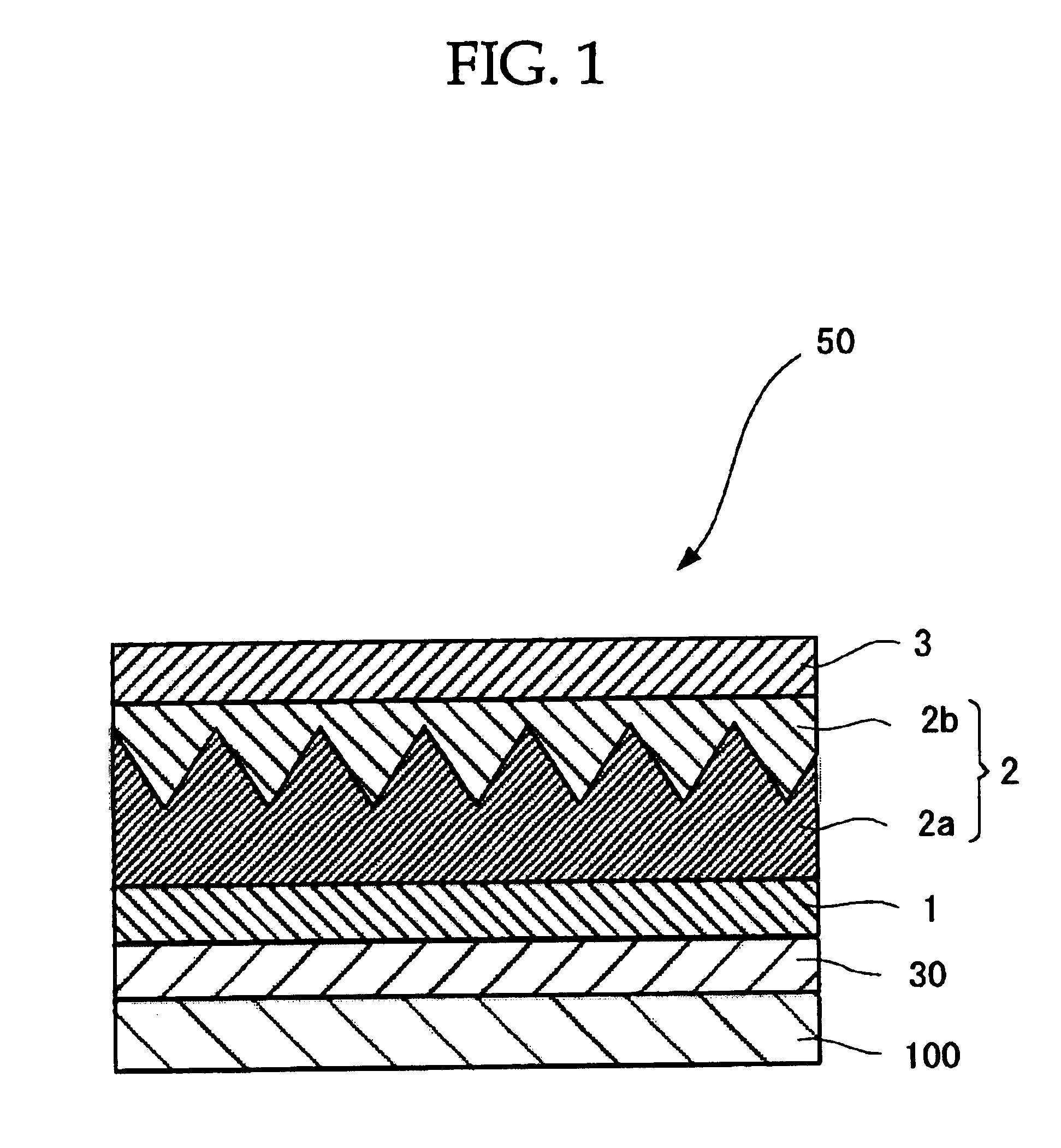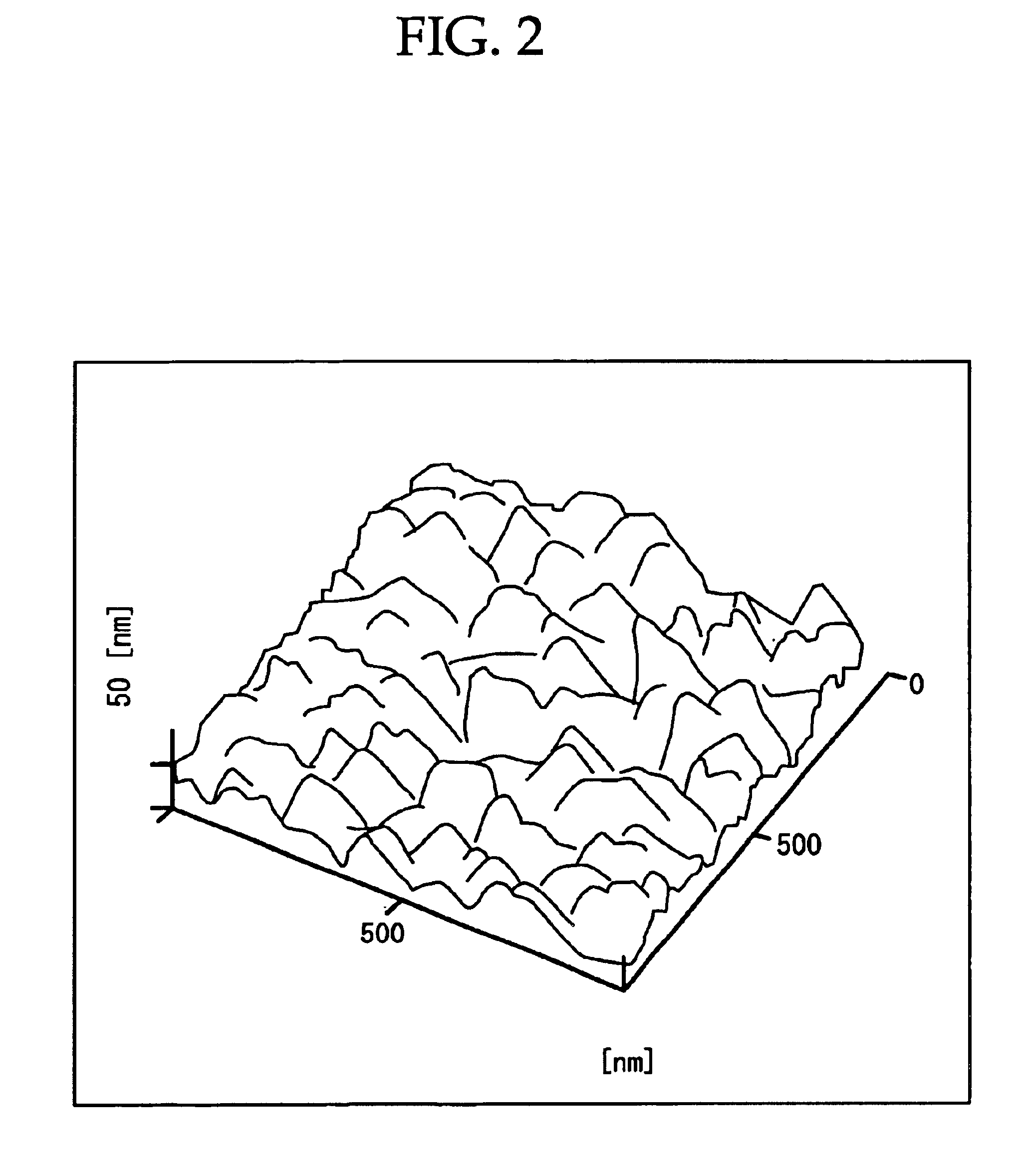Ferroelectric capacitor, process for production thereof and semiconductor device using the same
a ferroelectric capacitor and capacitor technology, applied in the direction of instruments, scanning probe techniques, vacuum evaporation coating, etc., can solve the problems of ferroelectric capacitors not having sufficient fatigue properties, ferroelectric capacitors with polarization fatigue, etc., to reduce fatigue and efficiently produce ferroelectric capacitors
- Summary
- Abstract
- Description
- Claims
- Application Information
AI Technical Summary
Benefits of technology
Problems solved by technology
Method used
Image
Examples
example 1
A ferroelectric capacitor 50 shown in FIG. 1 was produced in the following manner.
Initially, a lower electrode 1 was formed by sputtering to a thickness of about 150 nm on a SiO2 film 30 on a silicon substrate 100.
A Pb(Zr,Ti)O3 [PZT] film 2a was formed by MOCVD on the lower electrode 1. More specifically, the Pb(Zr,Ti)O3 [PZT] film was formed at a temperature of 620° C. feeding Pb(DPM)2 as a Pb source at 0.37 ml / min., Zr(dmhd)4 as a Zr source at 0.31 ml / min., and Ti(O-iPr)2(DPM)2 as a Ti source at 0.21 ml / min. at an oxygen partial pressure of 5 Torr (666 Pa). Each of these materials was dissolved in tetrahydrofuran (THF) in a concentration of 3% by mole to yield a solution, and the solution was conveyed to a vaporizer. The solution containing THF and the material was vaporized at 260° C. in the vaporizer, was mixed with oxygen gas to form a source gas, and the source gas was sprayed to the lower electrode using a showerhead. The film-forming time of the Pb(Zr,Ti)O3 [PZT] film 2a was...
example 2
Production of Semiconductor Device
The semiconductor device was produced in the following manner.
Initially, as shown in FIG. 4, an element-separation dielectric film was formed by local oxidation of silicon (LOCOS) on a surface of a silicon Si substrate 100 to define and separate an element region. The element-separation dielectric film can be formed by LOCOS or by forming grooves on the silicon substrate and embedding a dielectric film in the grooves. The silicon substrate 100 may be of either n-type or p-type.
A transistor having a side-wall dielectric film with a gate electrode 18 and a source-drain doped layer was formed in the element region. An interlayer dielectric film 22 composed of a silicone oxide was entirely formed by CVD, followed by smoothing the surface of the interlayer dielectric film 22 by chemical-mechanical polishing (CMP).
Next, contact holes reaching the source-drain doped layer were formed in the interlayer dielectric film 22 by photolithography, and a Ti film a...
PUM
| Property | Measurement | Unit |
|---|---|---|
| surface roughness | aaaaa | aaaaa |
| surface roughness | aaaaa | aaaaa |
| temperature | aaaaa | aaaaa |
Abstract
Description
Claims
Application Information
 Login to View More
Login to View More - R&D
- Intellectual Property
- Life Sciences
- Materials
- Tech Scout
- Unparalleled Data Quality
- Higher Quality Content
- 60% Fewer Hallucinations
Browse by: Latest US Patents, China's latest patents, Technical Efficacy Thesaurus, Application Domain, Technology Topic, Popular Technical Reports.
© 2025 PatSnap. All rights reserved.Legal|Privacy policy|Modern Slavery Act Transparency Statement|Sitemap|About US| Contact US: help@patsnap.com



